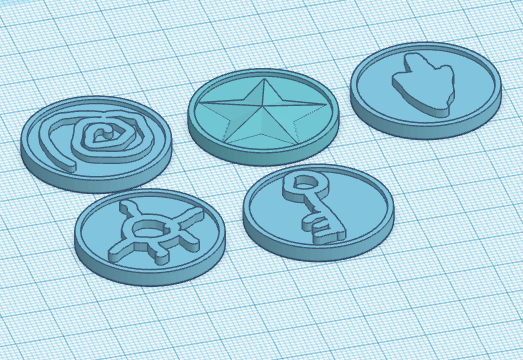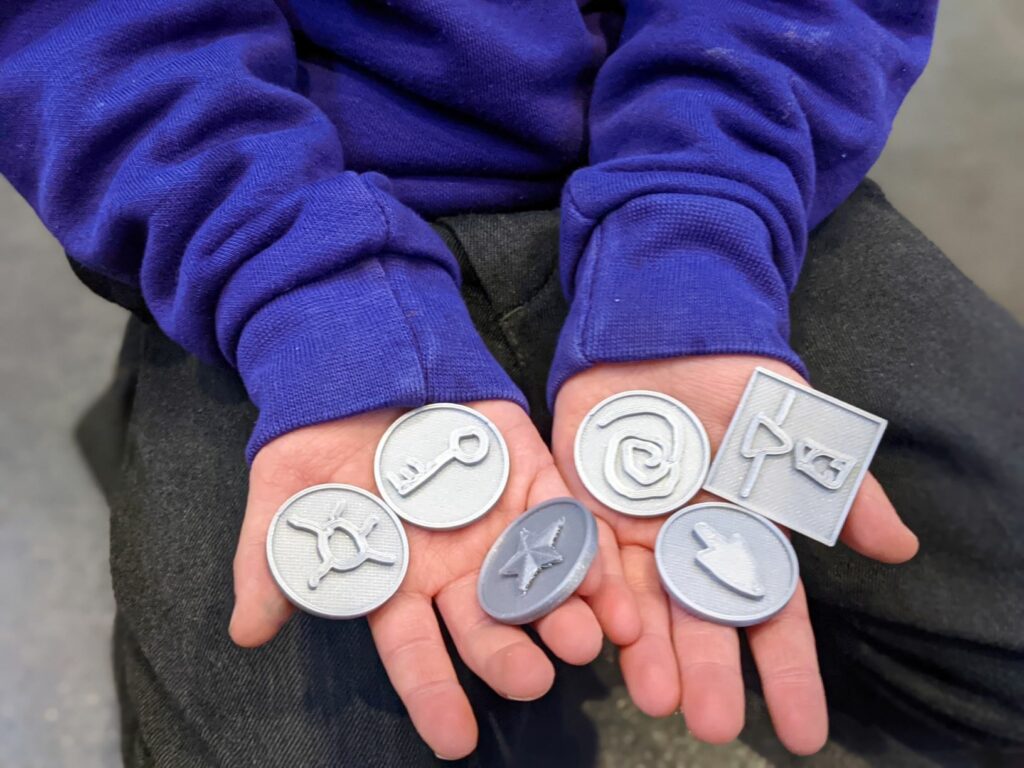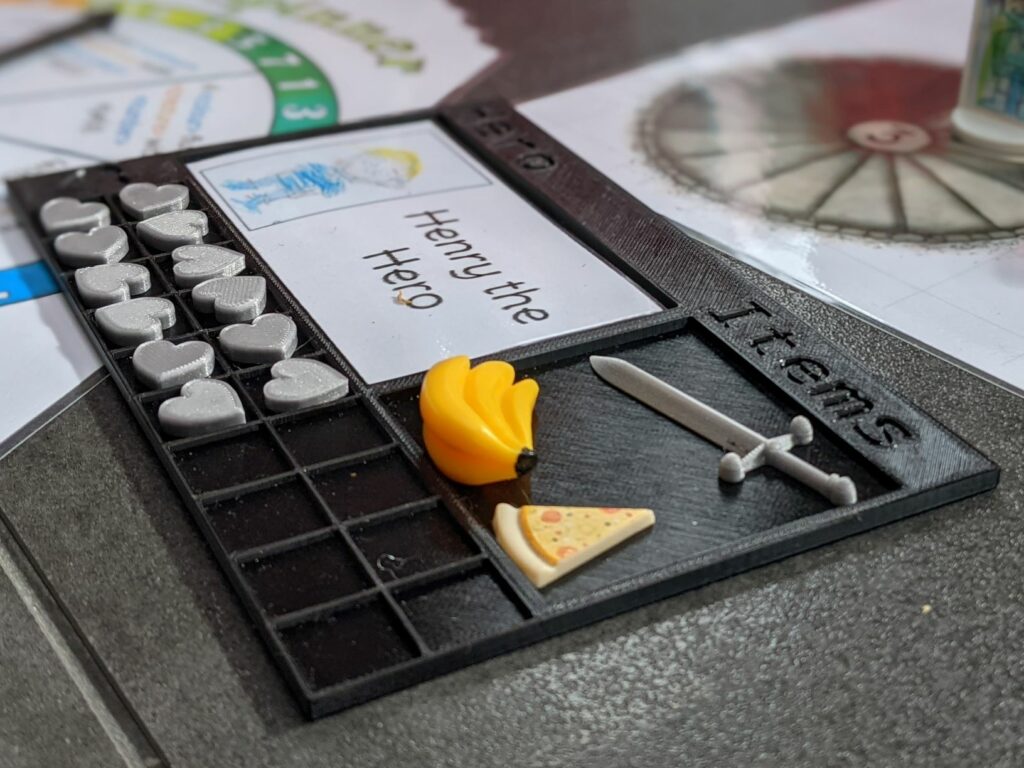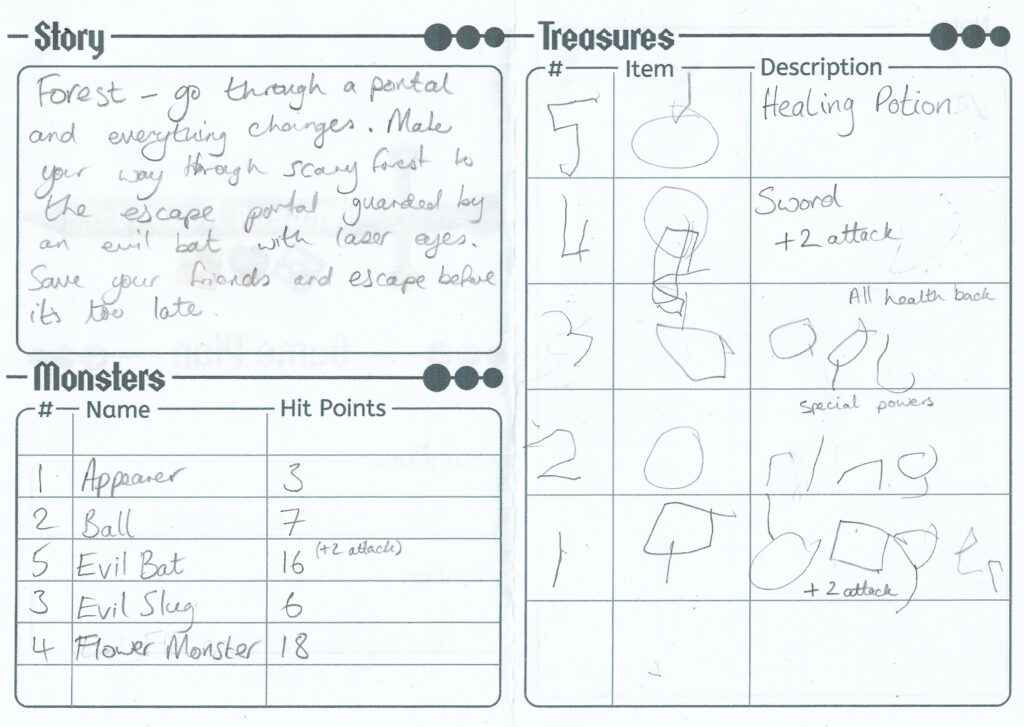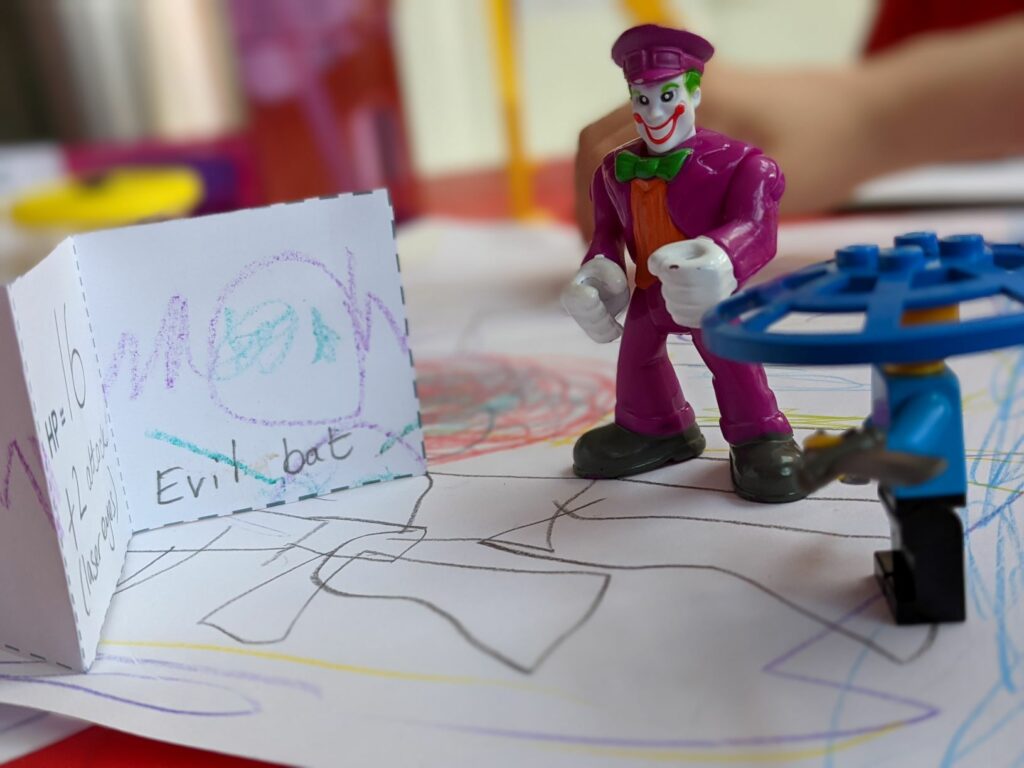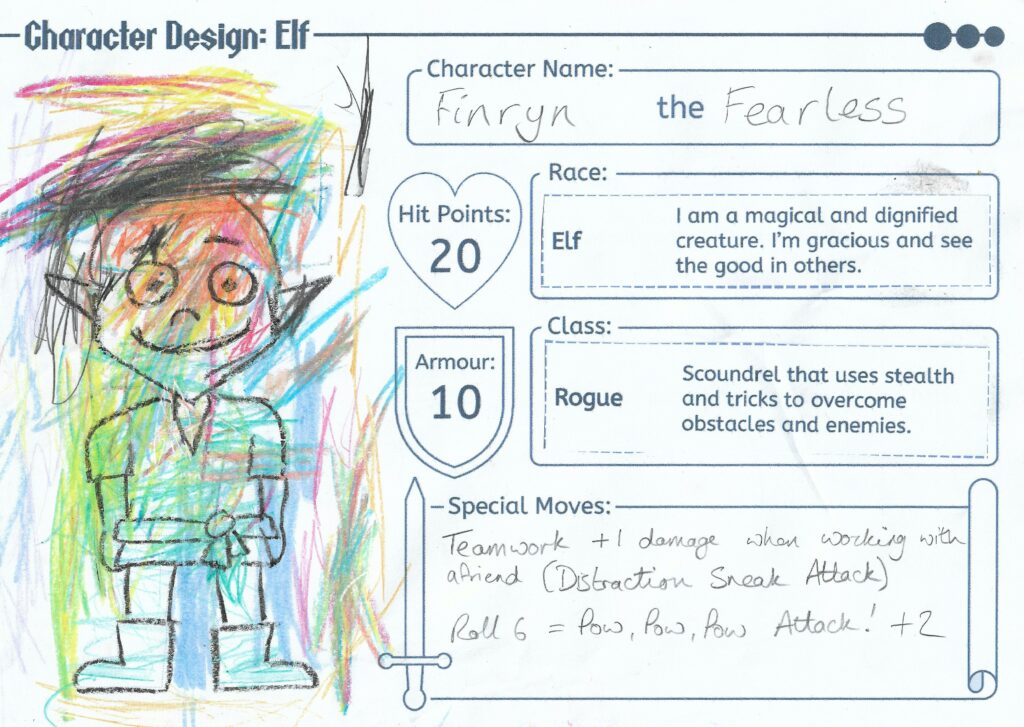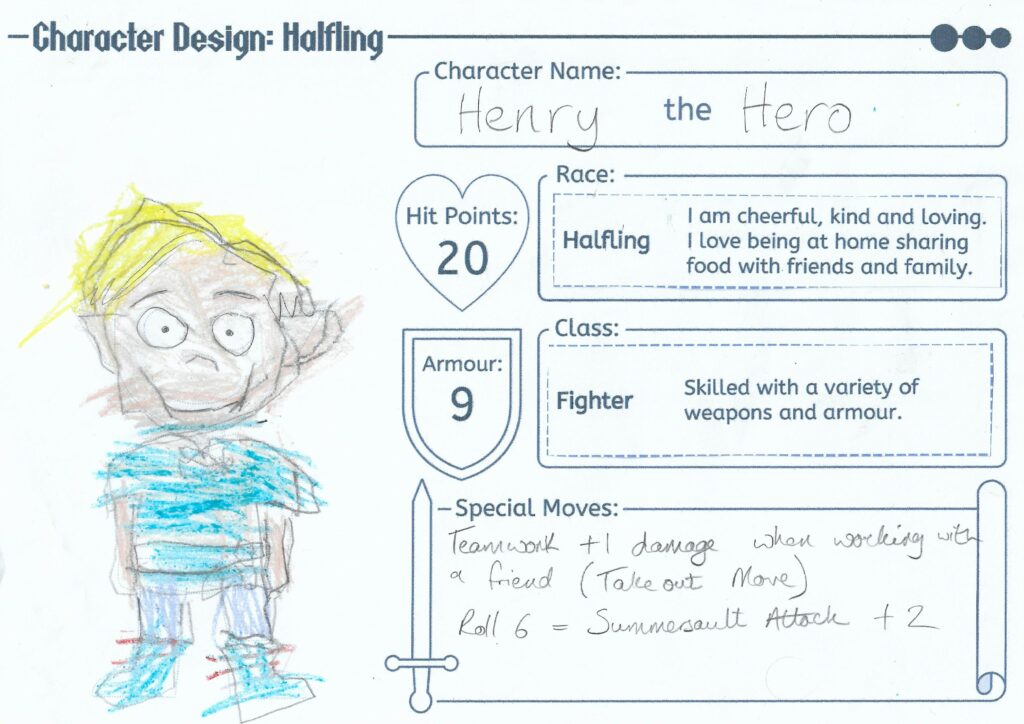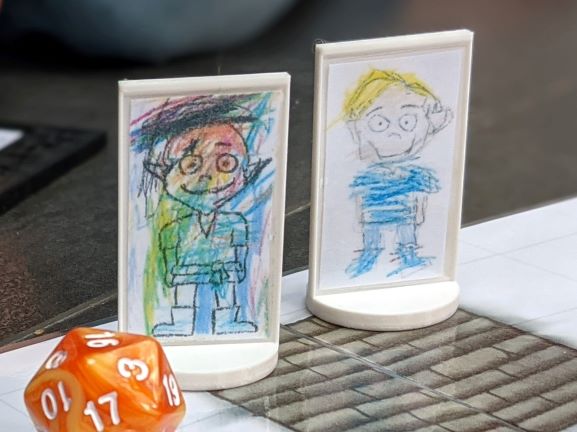In this post I’m going to share my experiences, alongside my two young children, of developing a simplified Dungeons & Dragons style game for young children that we’ve named “Dungeon Explorers” and how this fits in with some basic digital literacy and computing theory. The main objectives of this project have been to:
- Develop a fun, non-competitive and expandable game to play together
- Spark imagination and enhance storytelling skills
- Introduce some pre-programming language and concepts
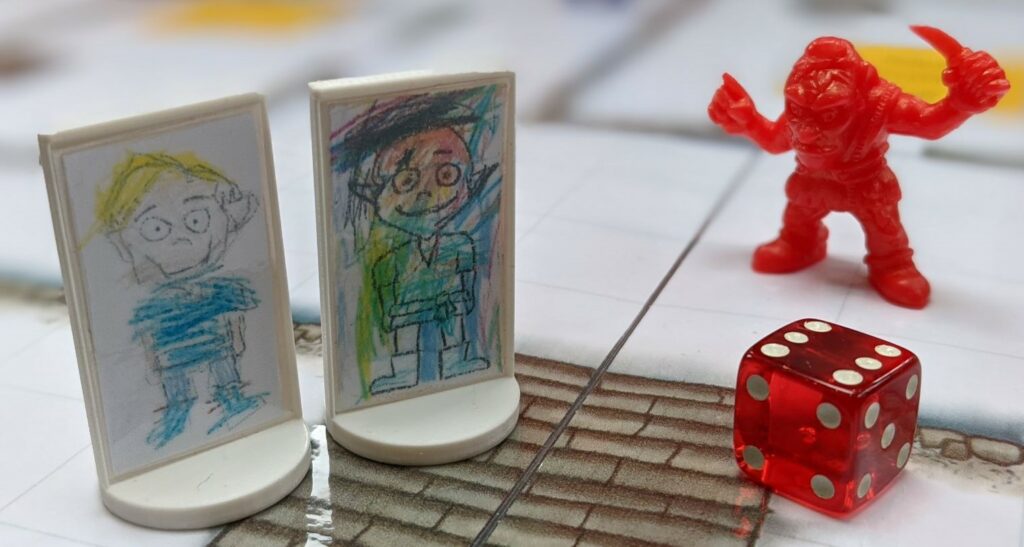
During the recent lockdowns we’ve enjoyed playing a variety of board and card games. Throughout the first lockdown my boys were just 2 and 4 but Snakes and Ladders and Cobra Paw were their firm favourites, more recently we’ve been enjoying Uno, Game of Life Junior and Dungeon Mayhem, to name a few. I love playing games with the children but the only downside is that games are often quite competitive and with two young children, someone usually ends up disappointed (or in tears) when they lose so I was looking for something that would encourage my children to work as a team and accomplish a goal together. From years of watching The Big Bang Theory and, more recently, Stranger Things, I’ve often been intrigued by the idea of Dungeons and Dragons. As my children are still young (now 3 and 5) I had a look around for a child-friendly alternative and came across Kids Dungeon Adventure. The basic idea of this is simple:
- Create a “dungeon” from building blocks.
- Introduce a scenario (our regular one is “the evil dragon has captured Sonic the Hedgehog and brave explorers need to rescue him“).
- Scatter monsters and treasures around the “dungeon”.
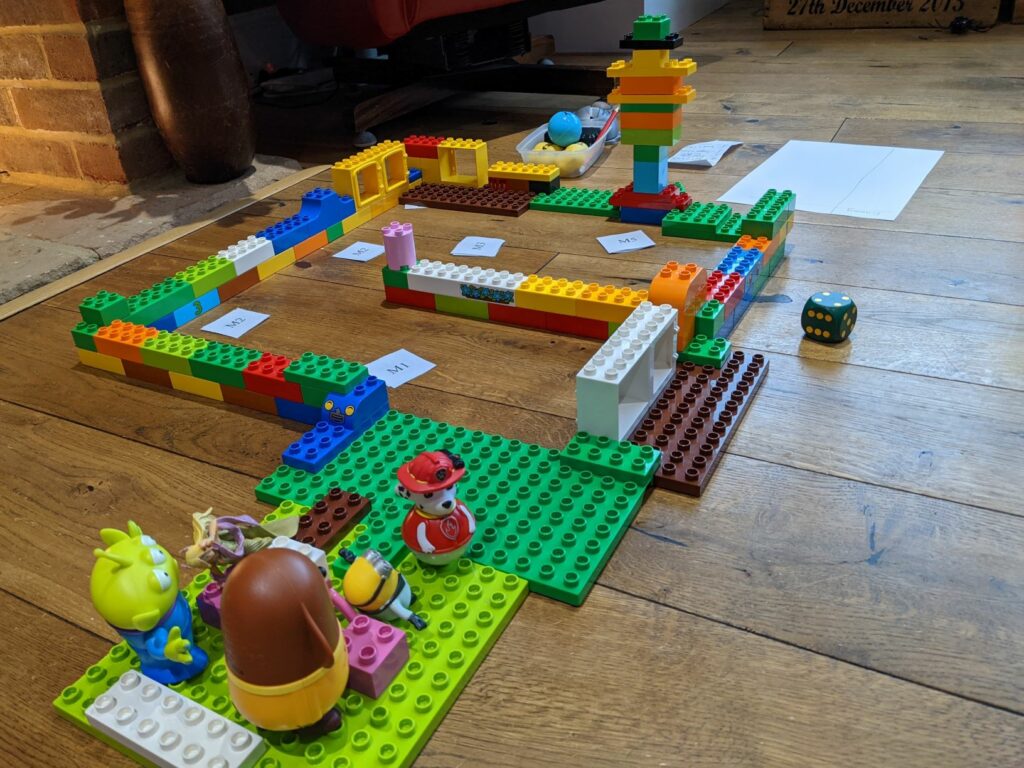
Gameplay involves navigating the dungeon and defeating the monsters by rolling a six-sided die (knock the die value from the monster’s hit points until they are defeated). The grownup plays as the dungeon master and rolls on behalf of the monsters as well as keeping the adventure flowing. Players each start with 20 hit points which are deducted when monsters attack. You can buy Kids Dungeon Adventure for around £5 which gives you the full rulebook along with gameplay ideas, monster cards and treasure cards. For such a reasonable price this is a great starting point for introducing the basic concepts and gameplay.
After playing through the adventure for the first time my five-year old was keen to set up his own dungeon maze using wooden blocks, he chose the monsters from the printed selection and we played again straight away!
3D Modelling
I couldn’t resist making the game a little more interesting and incorporating some Computing skills in the form of 3D modelling. I’ve been keen to introduce my oldest son to some simple 3D modelling after we purchased a 3D printer back in December so we decided to make 3D printed treasures which my son helped design using Tinkercad. I highly recommend Tinkercad as a starting point for 3D modelling with children, it works well in the browser both on a computer and a tablet, and was even accessible enough for my five-year-old to make some simple creations. He was so excited to be able to make something to print in 3D. He was really pleased with how these little tokens turned out and enjoyed assigning meanings to them in the game (for example, the dagger gives you +2 attack points and the key unlocks the dungeon at the end). I was also excited to be able to have something to design and print as I’d not had many opportunities to use the 3D printer, I also designed and created a player dashboard to store player information, items collected and health points which are little hearts. This was a really fun aspect to include in the project! (Although my three-year old cried the first time he had to relinquish some of his health points!)
Designing an adventure
My son was very keen to design his own story to play through, complete with monsters and treasures so I put together a planning booklet for him to use to help plan out the adventure and monster design sheets to create the monsters around the dungeon. He still needs my help with much of the writing during the planning stages at the moment but he gets the concept of why it is important to plan the game and what to do. He very much enjoys inventing stories and this has provided a good opportunity to discuss features that make a good story! We’ve also moved on from building the dungeons with building blocks to creating drawn maps for players to work their way around instead. Both of my children love drawing so the map and monster creation have been very enjoyable for them.
The planning booklet is currently very simple as my son is only five but I can already see some expansion may be needed soon as our stories are getting more complex and I’m thinking we really need a separate sheet for each part of the adventure alongside space to sketch each area of the map. At the moment my son tries to sit down and draw a whole map to play on then gets frustrated as he doesn’t think about or plan it in his head first so it often doesn’t meet his expectations, having he opportunity to do a rough sketch of each area first separately would probably be very beneficial.
You can download version 1 of the planning booklet below. Version 2 will probably include the addition of a setting description (or drawing), flowchart, planning pages for both maps and story segments for each of the following:
- Beginning – Introduction to the story: Where are you? Why are you there? What is the goal?
- Middle – One or two areas with something to do to help achieve the goal (treasures, monsters, friends, puzzles etc.)
- End – Usually a significant monster to defeat and/or door to unlock
I’m already seeing similarities with this and the game design documents I’ve used in the past when teaching computer game design. Here’s a download link for version 1 of the planning booklet, along with monster design and combat sheets:
Character Design
We’ve used a variety of different characters within our games so far; we began with Alien and Minion figures then progressed to Playmobil and Lego characters (complete with accessories!). As the boys are quite into role-play and drawing I decided I could use the 3D printer again to create some character pawns and help them to design their own characters properly to display in them. I referenced some D&D sites to look up common character types and their characteristics and used this to produce a character design sheet simple enough for young children to use, my youngest is a “rogue elf” called Finryn the Fearless. We ended up creating a family of characters including myself and my husband! This was a fun activity and the boys really liked seeing characters made themselves being played in the game!
If you fancy designing your own characters you can download the design sheets below:
Computing
You’re probably wondering how any of this relates to Computing, well, I must admit, I had my “Computing Teacher” hat on at the beginning of this project. My son loves using Scratch Junior to create his own little stories and animations and when I came up with this idea, in addition to having a fun game to play I thought it would be a good way to introduce the concept of decision making and rules within an interactive story which is a great starting point for making a simple computer game. I mentioned already that I can see the similarities between designing an adventure for this system to computer game design documents, and in fact, I’ve had fun running a workshop in school previously working with children to create a roleplaying style game using Scratch. Now I’m not currently in the secondary school classroom my focus is around the early years age group and I discussed in a previous post how, at this stage, the algorithms aspect of computational thinking doesn’t need to be taught within a strict computing environment but rather by just the use of our language with children to introduce the basic concepts of:
- Making things happen (giving general instructions) – Explain what your character is going to do.
- Making decisions (if . . . then . . . else . . .) – “If I roll 4 or higher the monster runs away else he stays and attacks“
- Repeating things (loops) – Roll – deduct hit points – repeat until the enemy is defeated
- Knowing/remembering things (storing variables) – Keeping track of health and collecting items
As you can see, role playing games allow you to introduce these concepts in a very natural way. Just today my five-year-old played the role of Dungeon Master and explained: “IF you defeat this monster THEN you get the key and you can open the portal door.”
Reflections on Playing the Game
I’ve absolutely loved the evolution of our simple game system over the past few weeks, what started off as simply defeating monsters in a maze/dungeon now includes detailed descriptions of moves carried out, descriptions of the rooms they are in and made-up items they have collected! Both boys get very excited about describing parts of the story but need to be reigned in a little at times when trying to talk over one another!
Personally I have some particular highlights that have stuck in my mind recently:
- The Bookcase – When I described a book case that opened into a giant cupboard my son revealed he found a book about all the monsters of the castle and how he could use it to give him extra information to help defeat them!
- Robot Party Room (this was my favourite) – My oldest son found a sad robot that was “lonely in the corner of the room because the other robots wouldn’t play with him” so my son demonstrated a beautiful act of imaginary kindness and made friends with the robot who then joined the team to help with the quest.
- Bats – In a room full of bats my son identified that bats don’t like light so got his new robot friend to emanate a bright light “like the sun” from his tummy to daze and knock out the bats when they started flying around erratically!
I’m really happy with how this initial concept has evolved from a simple Dungeons and Dragons style game to the inclusion of 3D design and printing, story-telling, writing and drawing. From here, we’ll continue to add detail and variety to our adventures. In terms of progression I’ve been looking at the Hero Kids RPG System which looks great with a large selection of adventures available to play. This starts to gradually introduce more complex gameplay so would be a natural next step. I’ve also looked at other off-the-shelf games which will probably feature on our future wish-lists, these being D&D Adventure Begins, No Thank You Evil and Stuffed Fable. If you have any more to add to the list drop me a comment below or tweet @GeekyNicki

